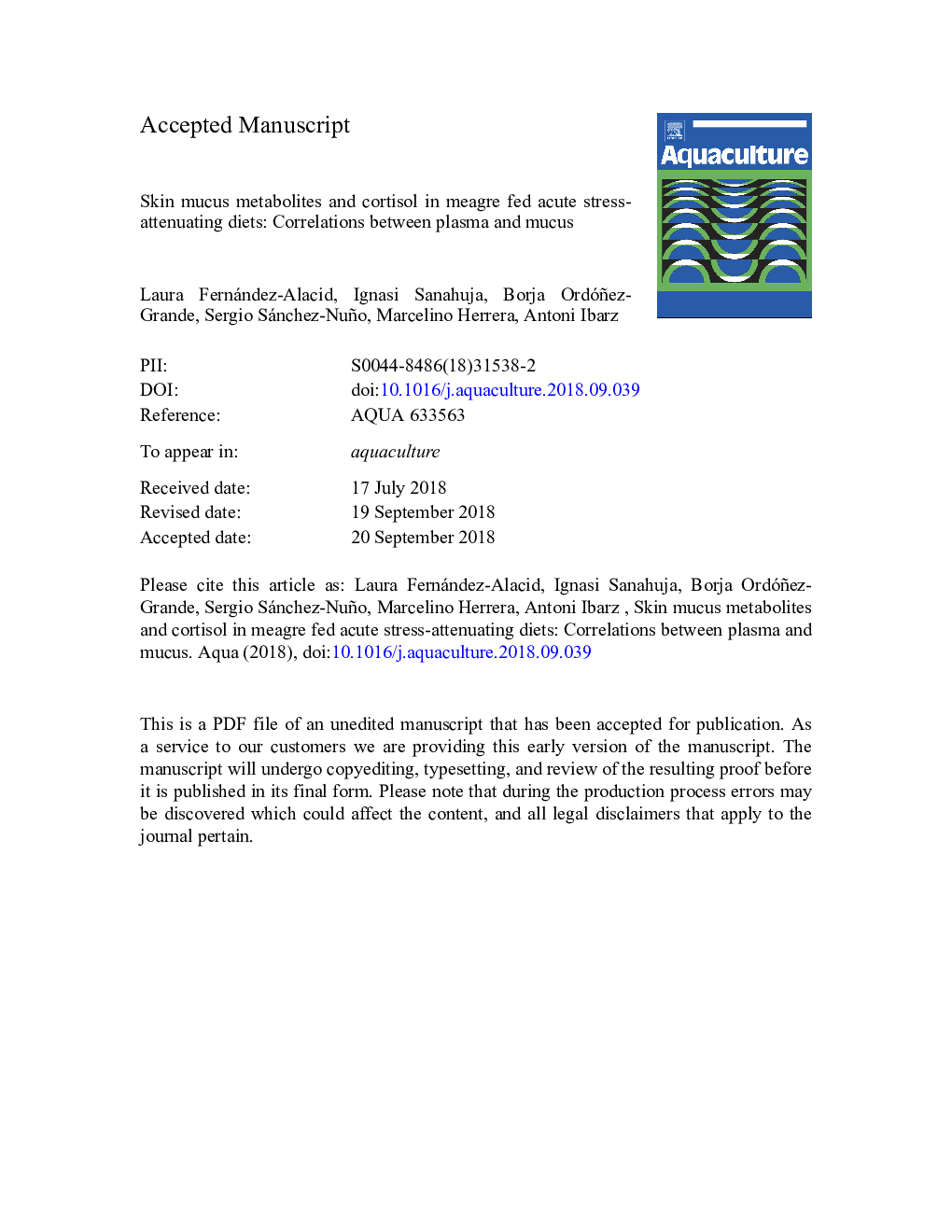| Article ID | Journal | Published Year | Pages | File Type |
|---|---|---|---|---|
| 10971205 | Aquaculture | 2019 | 29 Pages |
Abstract
The welfare of fish is influenced by management and environmental factors which may greatly increase animal stress levels and even endanger their survival. In this study of meagre (Argyrosomus regius), two stressor conditions, hypoxia and netting, are employed to evaluate the potential use of fish skin mucus as a non-invasive stress biomarker. Dietary supplementation for a week with stress-attenuating amino acids (aspartate, Asp, 1%; and tryptophan, Trp, 1%) was assayed for both conditions. Mucus and plasma samples were obtained from non-stressed fish (basal), and both one and six post-stress hours; and the levels of glucose, lactate, protein and cortisol were determined. Moreover, the correlations between plasma and mucus stress metabolites and cortisol were established. A classic stress response was evidenced in plasma by increased glucose, lactate and cortisol levels (pâ¯<â¯0.05), irrespective of the stressor. The skin mucus responses were amplified with respect plasma; and mucus metabolites and cortisol rose higher under hypoxia than under netting, possibly in relation to an overall higher energy demand. Dietary supplementation with Trp seems to be protective, mitigating the acute stress provoked by netting; in contrast, additional Asp produces over-exudation of mucus metabolites and cortisol, and an undesirable energy loss. The statistical analysis showed a positive relation between plasma and skin mucus stress markers, opening up new possibilities for non-invasive, quick and simple methods to detect early stress responses in the fish.
Related Topics
Life Sciences
Agricultural and Biological Sciences
Aquatic Science
Authors
Laura Fernández-Alacid, Ignasi Sanahuja, Borja Ordóñez-Grande, Sergio Sánchez-Nuño, Marcelino Herrera, Antoni Ibarz,
